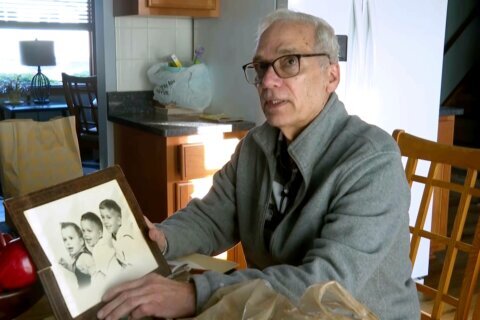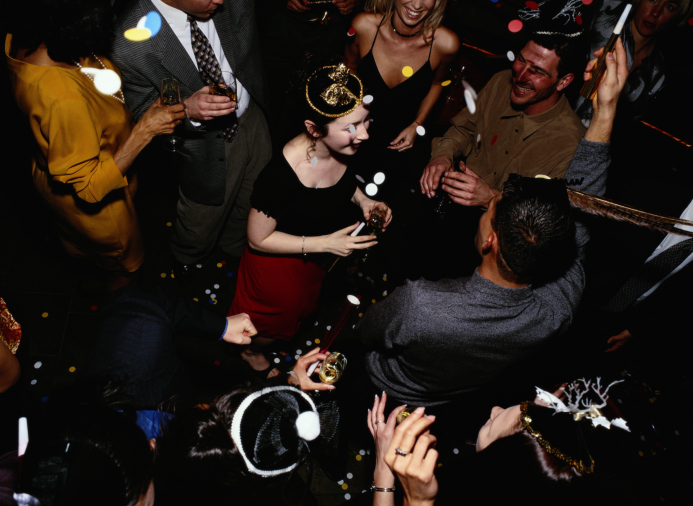WASHINGTON — It’s that time of year: time to stock up on all the pencils, notebooks and school supplies that your little students need for fall.
It’s tempting to load up the cart with colorful folders, shiny backpacks and celebrity-branded lunchboxes, but not all of the items on store shelves are the healthiest options for your kids and the planet. Some contain chemicals that research groups have linked to adverse health effects; others produce excess waste that ends up in landfills.
“It’s really important when you’re thinking about back-to-school to think about the impact of the environment and your health that school supplies may have,” says Heather White, executive director of the Environmental Working Group.
Preparing your kids for the school year? White offers some simple back-to-school tips to ensure your kids are a bit greener when they board that yellow school bus.
Everyday supplies: Backpacks, crayons, pencils
Backpacks are a back-to-school essential for students loaded down with heavy books and important assignments. And you don’t have to forgo durability when it comes to selecting a greener option.
Look for backpacks made with natural fibers, and skip those made with PVC (often referred to as “3” on material labels) and phthalates. White says phthalates are endocrine disruptors and have been linked to early puberty, asthma obesity and ADHD.
“If there isn’t a [natural fiber] option for you, polyester and nylon are better than PVC,” White says. “So the label should say PVC-free, or make sure it doesn’t have the number ‘3’ plastic on it.”
There are plenty of sustainable supplies on the market when it comes time to filling those backpacks. In a recent study, EWG’s action fund found asbestos-contaminated talc in some brands of children’s crayons. White says most of the contaminated crayons were imported from China, so a simple solution is to buy American-made crayons.
“Many crayons in the United States, in fact, the vast majority, are talc-free, which means they won’t be contaminated with asbestos,” White says.
Beeswax and soy-based crayons are available for those who want to avoid crayons containing paraffin wax, made from crude oil. EWG also recommends plain wooden pencils made from sustainable wood or recycled paper, and recycled ballpoint pens.
Time for lunch? Time to involve your kids
White, who has two school-aged children of her own, nixed single-use plastic ware and started packing reusable bamboo utensils and silverware in her children’s lunchboxes.
Worried your flatware will end up in the bottom of a cafeteria trash can? White understands the hesitation, but says it’s all about giving your kids some responsibility and involving them in the decision.
“I think the key is explaining to them why it’s important to try to reduce our impact on the environment, and why it’s ultimately a healthier choice for ourselves, because protecting the environment ultimately means we are protecting our health,” she says.
Packing a reusable water bottle is a better alternative to single-use water bottles and juice boxes, and lunchboxes made from nontoxic materials (try cotton or stainless steel) are preferable over plastic.
These changes may seem small, but White says over the course of a year, they can make a big difference.
“If you can reduce single-use plastic … or if you can switch from plastic water bottles to a refillable stainless steel bottle, you can really make an impact on the environment,” she says.
Enlist your kids for help when it comes to deciding what goes inside their lunchboxes as well. EWG’s Good Food on a Tight Budget resource offers healthy recipes, shopping lists, tips and more for families looking to stretch a dollar while choosing foods low in pesticides and artificial ingredients.
“I think the key take-away for everyone is to really try to involve your kids in the process. Explain to them why it’s important to be healthy and how you can be healthy on a budget and making your own meal is a great way to save money,” White says.
Make your hand sanitizer healthier
Back-to-school season is synonymous with cold and flu season. White says the best way to keep germs at bay is to encourage kids to wash their hands with soap and water as much as possible, but choosing a better on-the-go option is important too.
When selecting a hand sanitizer, White says to avoid bottles with the words “antimicrobial” and “anti-bacterial.” It may seem counterintuitive, but these sanitizers contain a chemical called triclosan, which pollutes the waterways.
“The best thing you can do is to choose plain-old hand sanitizer … and to encourage your kids to use hot water and plain soap. Even the FDA says that there’s no evidence that triclosan reduces germs any better than just good old-fashioned soap and water,” White says.
“It’s the best way to prevent colds and to prevent the flu and all the good things that come along with going back to school.”
Remember: Small steps amount to a big difference
Starting off the school year on a more sustainable foot doesn’t necessitate a total lifestyle overhaul. White says one or two changes at a time can make a big difference.
“Don’t get overwhelmed. Just try to choose one good habit that you want to focus on as you go back to school, and that will really add up to a big change over time.”







